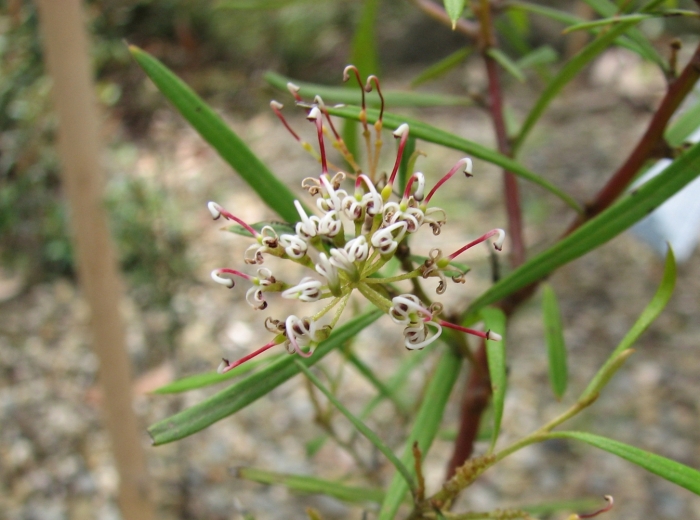Variable-Leaved Grevillea
(Grevillea diversifolia)
Variable-Leaved Grevillea (Grevillea diversifolia)
/
/

Melburnian
CC BY 3.0
Image By:
Melburnian
Recorded By:
Copyright:
CC BY 3.0
Copyright Notice:
Photo by: Melburnian | License Type: CC BY 3.0 | License URL: https://creativecommons.org/licenses/by/3.0 | Uploader: Melburnian | Publisher: Wikimedia Commons | Title: Grevillea_diversifolia_subsp._subtersericata.jpg | Notes: {{Information |Description= ''Grevillea lanigera'' 'Lutea' (cultivated, labelled) Royal Botanic Gardens Cranbourne, Australia |Source= digital photograph by author |Date= 2007-10-07 |Author= [[:en:User:Melburnian|Melburnian]] |Permission= see below


Estimated Native Range
Summary
Grevillea diversifolia, commonly known as Variable-Leaved Grevillea, is an evergreen shrub native to the sandy soils of coastal heathlands and open woodlands in Southwestern Australia. It typically grows to a height of 6-9 feet and a width of 2-3 feet. The plant is characterized by its variable leaf shapes, which can be linear to oblong, and its distinctive inflorescences composed of cream, green, and red flowers that bloom in winter and spring, attracting nectar-feeding birds. The flowers are moderately showy, with a unique brush-like appearance.
Variable-Leaved Grevillea is valued for its drought tolerance and unique flowers, making it an excellent choice for water-wise gardens and native plant landscapes. It is often used in ornamental plantings, as a screen or hedge, and for habitat restoration projects. This shrub thrives in full sun to part shade and prefers well-drained soils, tolerating both sandy and rocky substrates. While it is generally low-maintenance, it can be susceptible to root rot if overwatered or planted in poorly drained soils. Pruning after flowering can help maintain a compact form and encourage denser foliage.CC BY-SA 4.0
Variable-Leaved Grevillea is valued for its drought tolerance and unique flowers, making it an excellent choice for water-wise gardens and native plant landscapes. It is often used in ornamental plantings, as a screen or hedge, and for habitat restoration projects. This shrub thrives in full sun to part shade and prefers well-drained soils, tolerating both sandy and rocky substrates. While it is generally low-maintenance, it can be susceptible to root rot if overwatered or planted in poorly drained soils. Pruning after flowering can help maintain a compact form and encourage denser foliage.CC BY-SA 4.0
Plant Description
- Plant Type: Shrub
- Height: 6-9 feet
- Width: 1.5-3 feet
- Growth Rate: Moderate
- Flower Color: Cream, Green, Red
- Flowering Season: Winter, Spring
- Leaf Retention: Evergreen
Growth Requirements
- Sun: Full Sun, Part Shade
- Water: Very Low, Low
- Drainage: Medium, Fast
Common Uses
Bee Garden, Bird Garden, Butterfly Garden, Drought Tolerant, Hummingbird Garden, Low Maintenance
Natural Habitat
Sandy soils of coastal heathlands and open woodlands in Southwestern Australia
Other Names
Common Names:
Scientific Names: , Grevillea diversifolia,
GBIF Accepted Name: Grevillea diversifolia Meisn.